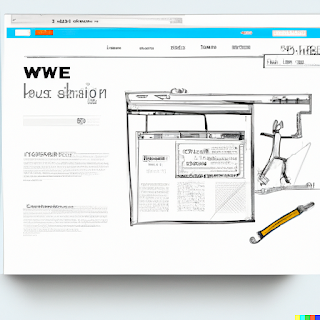How to Create Your Own Website (Without Any Technical Experience): A Complete Step-by-Step Guide
In this step-by-step guide, we'll walk you through the process of creating your own website, even if you have no coding or design skills. Whether you're looking to start a personal blog, a business website, or anything in between, this guide has you covered.
Step 1: Choose a Domain Name and Web Hosting Provider
The first step in creating a website is choosing a domain name and a web hosting provider. Your domain name is the address of your website (e.g. www.example.com), and your web hosting provider is the company that stores your website's files and makes them available to visitors.
When choosing a domain name, try to keep it simple and memorable. You can use a domain name generator tool to help you come up with ideas, or simply use your own name or business name if it's available.
As for web hosting, there are many options available, ranging from free to premium. Some popular choices include Bluehost, HostGator, and SiteGround. Do some research to find the best fit for your needs and budget.
You can purchase the domain name and web hosting from Bhutan too. Read the article on Web hosting providers in Bhutan.
Step 2: Choose a Website Building Platform
Next, you'll need to choose a website-building platform. This is the software that will allow you to create and customize your website without any coding skills. There are many options available, including popular platforms like WordPress, Wix, and Squarespace.
When choosing a platform, consider your needs and goals for your website. Some platforms are better suited for certain types of websites, such as WordPress for blogs or Squarespace for businesses. Do some research and try out a few different platforms to see which one feels the most intuitive and user-friendly for you.
Step 3: Design and Customize Your Website
Once you've chosen your domain name and web hosting provider, and have selected a website-building platform, it's time to start designing and customizing your website. This is where you can get creative and make your website your own.
Most website-building platforms have a variety of templates and themes to choose from, which can be easily customized with your own content and images. You can also use widgets and plug-ins to add additional features and functionality to your website.
Some important elements to consider when designing your website include the layout, color scheme, fonts, and branding. It's also important to make sure your website is mobile-friendly and easy to navigate.
Step 4: Add Content and Images
The next step is to add content and images to your website. This can include text, videos, audio files, and any other media you want to include. When adding content, be sure to use keywords and phrases that are relevant to your website's topic, as this will help your website rank well in search results.
It's also important to optimize your images by using descriptive filenames and alt tags and compressing them for faster loading times. This will help improve the user experience for your visitors and also improve your website's SEO.
Step 5: Publish and Promote Your Website
Once you've completed your website, it's time to hit the publish button and make it live. This is an exciting moment, but don't stop there. Now it's time to promote your website and get it seen by as many people as possible. Here are a few ways you can promote your new website:
- Add your website to your social media profiles and share it with your followers.
- Submit your website to search engines like Google and Bing.
- Share your website with your email subscribers and ask them to share it with their friends and followers.
- Write guest posts or contribute to other blogs in your industry and include a link to your website in your bio.
- Join online communities and forums related to your website's topic and share your website with other members.
Conclusion
Creating your own website doesn't have to be complicated or intimidating. With the right tools and a bit of guidance, you can have a professional-looking website up and running in no time. By following the steps outlined in this guide, you can create a website that reflects your brand, goals, and interests and start attracting more visitors and building your online presence.
Remember to choose a domain name and web hosting provider, select a website-building platform, design and customize your website, add content and images, and promote your website to get it seen by as many people as possible. With consistency and patience, you can build a successful and engaging website that meets your goals and serves your audience.




Comments
Post a Comment